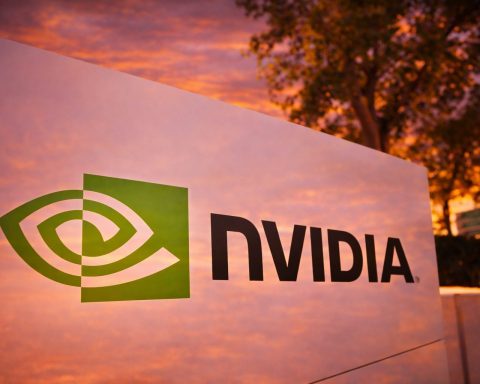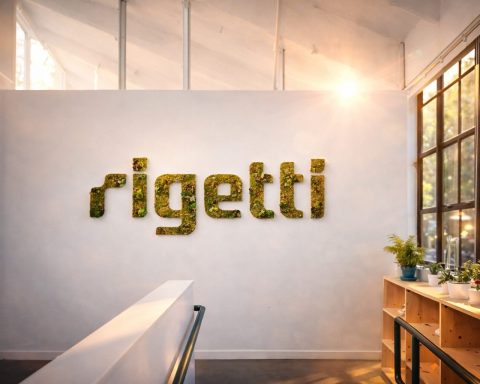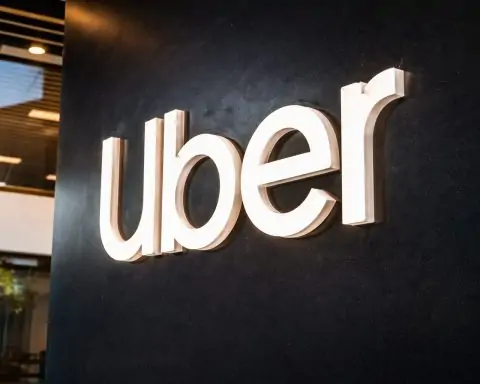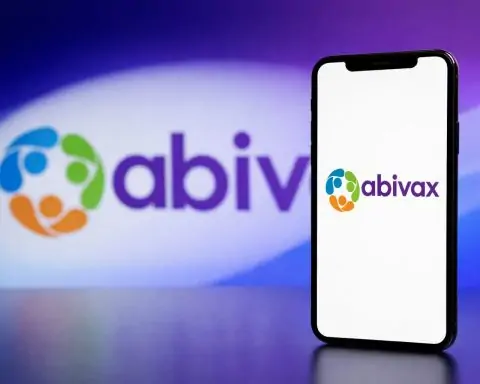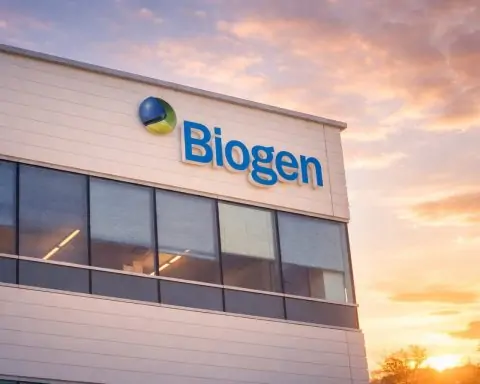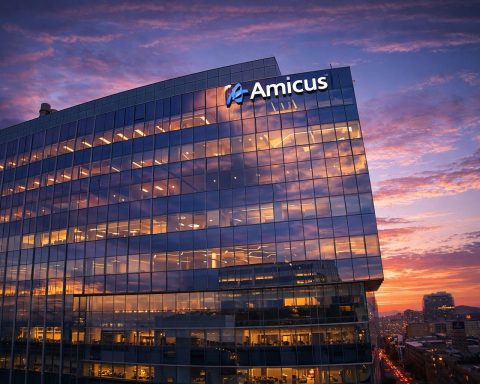Industry & Corporate Developments
- Novo Nordisk Hiring Freeze Amid Wegovy Slowdown: Weight-loss drug giant Novo Nordisk has implemented a global hiring freeze for non-critical roles as new CEO Maziar “Mike” Doustdar moves to slash costs [1]. Novo nearly doubled its workforce in five years to meet soaring demand for obesity drug Wegovy, but sales are now slowing, margins tightening, and investors growing uneasy [2] [3]. “I don’t want to limit myself in terms of where I look for savings, and salaries are a cost item. I will go through everything,” Doustdar warned earlier this month [4]. The company faces layoff risks in its sales force as it pivots focus to newer drugs, aiming to regain its edge against Lilly’s rival offerings [5] [6].
- Activist Investors Target Healthcare Firms: A new trend sees activist hedge funds and investors pressuring major healthcare companies to boost performance. In recent months, Medtronic added independent directors after Elliott Management took a stake, Charles River Labs settled with Elliott by revamping its board, and Pfizer came under fire from Starboard Value for underperformance [7] [8]. Even Novo Nordisk drew interest from Parvus Asset Management amid concerns it has “lost its first-mover advantage” in obesity treatments [9]. Investors are pushing for board changes, cost cuts, and strategic reviews across the sector, signaling growing financial pressure on pharma and biotech leadership.
- Takeda Eyes India for Faster Trials:Takeda Pharmaceutical (Japan) is exploring conducting global clinical trials in India to speed up drug development and launches in the fast-growing Indian market [10] [11]. India offers diverse patient pools, lower costs, and a booming hospital network, with its trials market expected to exceed $2 billion by 2030 [12]. “India is a strategic growth market…we’re exploring leveraging India’s clinical trial ecosystem,” said Annapurna Das, Takeda’s India general manager [13]. The company aims to integrate India into its R&D pipeline and expand Indian patients’ access to cutting-edge oncology, neuroscience, and vaccine therapies (including a dengue vaccine awaiting Indian approval) [14]. Takeda’s new Bangalore innovation center is also ramping up staffing in AI and data science to support its global digital transformation [15].
Mergers, Acquisitions & Partnerships
- Aurobindo Pursues $5.5 Billion Zentiva Deal:Aurobindo Pharma of India is reported to be leading the race to acquire Czech generic drugmaker Zentiva for up to $5.5 billion, in what could become the largest-ever Indian pharma acquisition [16]. Talks with Zentiva’s owner Advent International are ongoing, though Aurobindo’s board cautioned no binding agreement is signed yet [17]. Aurobindo shares dipped ~4% on the news, reflecting investor caution even as such a deal would dramatically expand its European footprint [18].
- Xoma Snaps Up Struggling Biotech Mural Oncology: Bay Area firm Xoma continued its shopping spree of distressed biotechs, announcing an agreement to acquire Mural Oncology for about $36 million (at $2.035/share) on Aug. 20 [19]. The deal, at a 16% premium to Mural’s prior stock price, follows Mural’s failures in melanoma and ovarian cancer trials that led it to lay off 90% of staff and seek strategic alternatives [20]. “This transaction…achieves the goal of our strategic review, which was to maximize shareholder value,” said Mural CEO Caroline Loew [21]. It marks Xoma’s third biotech acquisition this month [22], as the royalty aggregator picks up assets on the cheap after clinical flops (having recently bought failing vaccine developer HilleVax and T-cell therapy firm Lava Therapeutics) [23].
- Jazz Pharma & Saniona Ink Neurology Licensing:Jazz Pharmaceuticals struck an exclusive deal with Denmark’s Saniona to develop and commercialize SAN2355, a preclinical epilepsy drug targeting potassium channels. Jazz will pay $42.5 million upfront, with milestones up to $192.5 million (development) and $800 million (commercial) for Saniona [24] [25]. Jazz gains worldwide rights to the selective Kv7.2/7.3 activator, which is designed to be a best-in-class treatment for epilepsy by overcoming limitations of older non-selective compounds [26] [27]. “SAN2355 is a unique and highly promising preclinical asset…this agreement further expands our early-stage neuroscience pipeline,” noted Jazz R&D head Robert Iannone [28], emphasizing Jazz’s commitment to novel therapies for neurological disorders.
- China’s Bio-Thera Licenses Arthritis Drug to STADA: In a East-West partnership, Bio-Thera Solutions of China agreed to license its novel arthritis drug BAT1806 to Germany’s STADA Arzneimittel for commercialization across Europe, the UK, Middle East/N. Africa, and parts of the CIS [29]. Bio-Thera will receive up to €136 million (~$158 million) in payments, including an €8.5 million upfront and up to €127.5 million in milestones, plus tiered double-digit royalties on sales [30]. The deal showcases China’s growing biotech export potential – BAT1806 (a biosimilar of tocilizumab) will bolster STADA’s portfolio in autoimmune arthritis across multiple regions, leveraging STADA’s commercial networks while providing Bio-Thera a foothold outside China.
Regulatory & Drug Approval Updates
- Canada OKs First TIL Cell Therapy for Melanoma:Health Canada granted a conditional approval (Notice of Compliance with Conditions) to Lifileucel (branded Amtagvi), a personalized tumor-infiltrating lymphocyte (TIL) therapy from Iovance Biotherapeutics, for advanced melanoma [31]. This marks the first TIL therapy authorized in Canada, offering a new option for patients with metastatic melanoma who have few alternatives. The one-time cell therapy is made from a patient’s own immune cells extracted from tumors. Its approval under conditions means further data will be gathered post-market, but it is a significant milestone in immunotherapy. The Canadian decision comes as the U.S. FDA reviews a similar application; Iovance’s TIL therapy could become a pioneering approach to treat solid tumors if broadly approved.
- Tonix’s Fibromyalgia Drug – First in 15 Years: (U.S. update) The FDA recently approved Tonix Pharmaceuticals’ TNX-102 SL (cyclobenzaprine sublingual, brand name Tonmya) as a new treatment for fibromyalgia, the first novel therapy for this chronic pain condition in over 15 years [32] [33]. Tonmya is a non-opioid taken at bedtime to improve sleep quality and reduce fibromyalgia pain. “This is the first time a drug has been developed to target the non-restorative sleep…which we think plays an important role in fibromyalgia,” said Tonix CEO Seth Lederman [34]. In trials the drug significantly reduced daily pain versus placebo at 14 weeks [35]. Millions suffer fibromyalgia, and existing treatments (like Lyrica, Cymbalta, Savella) often provide limited relief [36] [37]. Analysts estimate Tonmya’s peak U.S. sales could reach $800 million, reflecting pent-up demand for better therapies [38]. (Note: FDA approval occurred just prior to this roundup’s date range, underscoring ongoing momentum in August.)
Public Health & Policy
- HIV PrEP Shot Faces Coverage Hurdle: In the US, CVS Health – operator of the largest pharmacy benefit manager – is refusing to cover Gilead’s new long-acting HIV prevention injection Yeztugo on its commercial formularies [39] [40]. Despite FDA approval in June and near-100% efficacy in trials, CVS cited “clinical, financial, and regulatory” reasons to hold off coverage [41]. Notably, current U.S. preventive care guidelines (USPSTF) list only older PrEP drugs, and CVS’s Affordable Care Act plans follow those federal recommendations [42]. HIV advocates blasted the decision as a “grave disappointment and…missed opportunity” to combat the epidemic, pointing to Yeztugo’s high price (~$28,000/year) as a barrier [43]. “It does reflect a price that is too high and a U.S. pharmaceutical pricing structure that is frankly not sustainable,” said Mitchell Warren of the NGO AVAC [44]. Gilead says it’s negotiating with payers and aims for 75% of insurers to cover Yeztugo by year-end [45], but the access debate underscores tensions between breakthrough public health tools and cost controls.
- RFK Jr. Clashes with Pediatricians on Vaccines:Robert F. Kennedy Jr., the controversial U.S. Health Secretary and longtime vaccine skeptic, escalated a feud with the American Academy of Pediatrics (AAP) over childhood COVID-19 vaccine guidance. This week the AAP issued its own vaccine recommendations contradicting federal HHS guidance, urging COVID shots for all eligible children. In response, Kennedy accused the pediatricians’ group of a “pay-to-play scheme to promote commercial ambitions of AAP’s Big Pharma benefactors,” in a post on X (Twitter) [46]. The public attack breaks with norms and highlights the unprecedented rift between a top health official and the nation’s pediatric experts. The AAP and other medical societies have already sued HHS and Kennedy in July over his vaccine policies [47]. Health leaders fear that mixed messages and politicization of vaccine advice could erode trust in childhood immunizations at a critical time.
- Health Workers Urge HHS Chief to Denounce Misinformation: In the wake of a shooting at CDC headquarters in Atlanta earlier this month, more than 750 HHS employees – including hundreds at CDC – signed a letter imploring Secretary RFK Jr. to protect federal health workers and renounce anti-vaccine rhetoric [48] [49]. The letter, delivered Aug 20, urges Kennedy to tighten security and emergency procedures after an armed intruder, allegedly fueled by COVID vaccine conspiracies, killed a CDC police officer on Aug 8 [50] [51]. “The deliberate destruction of trust in America’s public health workforce puts lives at risk. We urge you to act in the best interest of the American people,” the staff wrote, calling on Kennedy to publicly disavow false claims about vaccines and affirm CDC’s scientific integrity [52] [53]. The letter accuses him of undermining public health by firing key scientists (Kennedy ousted the CDC’s vaccine advisory panel in June) and spreading debunked theories linking vaccines to autism [54]. HHS responded that employee safety is a priority for Kennedy, who visited CDC after the attack [55], but the rift between the Biden administration’s own health workforce and its maverick health secretary is glaring.
- Mass Layoffs Hit U.S. CDC Amid Agency Overhaul: Over 600 CDC employees received termination notices this week as the Trump administration’s controversial downsizing of U.S. health agencies picks up steam [56]. The permanent cuts are part of a plan announced in April to lay off 10,000 federal health workers and shrink government [57]. A court order temporarily protected certain CDC divisions (like infectious disease, STDs, and environmental health) from layoffs, but many other units are now being gutted [58]. The public health programs losing staff include efforts to prevent sexual violence, child abuse, and birth defects, according to the employees’ union and AP reports [59]. “Due to a staggering lack of transparency from HHS, we can’t even determine the full extent of everything being lost,” the CDC’s union lamented [60]. The layoffs come on the heels of the violent CDC incident, deepening anxiety within the agency. Morale is reported low as career scientists face not only physical threats but also job uncertainty from politically driven budget cuts.
Research & Clinical Breakthroughs
- Salt, Brain Inflammation, and Hypertension: A new study from McGill University reveals that a high-salt diet can trigger inflammation in the brain that drives up blood pressure [61]. Researchers found excessive salt intake in rats activated immune cells in the hypothalamus, causing release of vasopressin – a hormone that raises blood pressure [62]. This suggests the brain is a “missing link” in certain forms of hypertension traditionally blamed on the heart or kidneys [63] [64]. “This is new evidence that high blood pressure can originate in the brain, opening the door for developing treatments that act on the brain,” said Dr. Masha Prager-Khoutorsky, the study’s senior author [65]. The findings, published in Neuron, are especially important for treatment-resistant hypertension: up to one-third of patients don’t respond to current drugs targeting kidneys/vessels [66]. By identifying a brain-mediated pathway, the research offers hope for novel neuro-targeted therapies against chronic high blood pressure – a condition affecting ~10 million deaths worldwide each year [67].
- Bacterial Virus Yields Cheaper Gene Therapy Vector: Canadian scientists have engineered a therapy platform using a modified M13 bacteriophage (a simple virus that infects bacteria) to deliver genes into human cells safely and at ultra-low cost [68] [69]. University of Waterloo researchers stripped down the M13 phage to carry only desired therapeutic genes, avoiding the costly and sometimes toxic components of current viral vectors [70] [71]. The result is a customizable gene delivery system that could treat a wide range of genetic disorders. “M13 is very simple…This simplicity allows for a cost-effective, efficient, and controllable approach to gene therapy,” explained Prof. Roderick Slavcev, the project’s lead [72]. Remarkably, at scale this phage-based method might cut gene therapy costs to one-millionth of today’s expensive viral vector therapies [73]. That could turn million-dollar treatments (like those for rare diseases) into much more accessible cures [74]. The team, dubbed “Team iNeuron,” is now testing the system in models of stroke and Alzheimer’s, aiming to replace damaged neurons [75]. If successful, this approach could revolutionize gene therapy by combining the efficacy of viruses with the safety and affordability of synthetic platforms.
Sources: Reuters, Politico, HealthLeaders, BioPharma Dive, FierceBiotech, Pharmaceutical Executive, Technology Networks, McGill University [76] [77] [78] [79] [80] [81] [82] [83] [84].
References
1. www.reuters.com, 2. www.reuters.com, 3. www.reuters.com, 4. www.reuters.com, 5. www.reuters.com, 6. www.reuters.com, 7. www.reuters.com, 8. www.reuters.com, 9. www.reuters.com, 10. www.reuters.com, 11. www.reuters.com, 12. www.reuters.com, 13. www.reuters.com, 14. www.reuters.com, 15. www.reuters.com, 16. www.reuters.com, 17. www.reuters.com, 18. www.reuters.com, 19. www.fiercebiotech.com, 20. www.fiercebiotech.com, 21. www.fiercebiotech.com, 22. www.fiercebiotech.com, 23. www.fiercebiotech.com, 24. www.pharmexec.com, 25. www.pharmexec.com, 26. www.pharmexec.com, 27. www.pharmexec.com, 28. www.pharmexec.com, 29. www.reuters.com, 30. www.reuters.com, 31. www.cgtlive.com, 32. www.reuters.com, 33. www.reuters.com, 34. www.reuters.com, 35. www.reuters.com, 36. www.reuters.com, 37. www.reuters.com, 38. www.reuters.com, 39. www.reuters.com, 40. www.reuters.com, 41. www.reuters.com, 42. www.reuters.com, 43. www.reuters.com, 44. www.reuters.com, 45. www.reuters.com, 46. www.healthleadersmedia.com, 47. www.contemporarypediatrics.com, 48. www.reuters.com, 49. www.reuters.com, 50. www.reuters.com, 51. www.reuters.com, 52. www.reuters.com, 53. www.reuters.com, 54. www.reuters.com, 55. www.reuters.com, 56. www.reuters.com, 57. www.reuters.com, 58. www.reuters.com, 59. www.reuters.com, 60. www.reuters.com, 61. www.technologynetworks.com, 62. www.technologynetworks.com, 63. www.technologynetworks.com, 64. www.technologynetworks.com, 65. www.technologynetworks.com, 66. www.technologynetworks.com, 67. www.technologynetworks.com, 68. www.technologynetworks.com, 69. www.technologynetworks.com, 70. www.technologynetworks.com, 71. www.technologynetworks.com, 72. www.technologynetworks.com, 73. www.technologynetworks.com, 74. www.technologynetworks.com, 75. www.technologynetworks.com, 76. www.reuters.com, 77. www.reuters.com, 78. www.healthleadersmedia.com, 79. www.reuters.com, 80. www.fiercebiotech.com, 81. www.reuters.com, 82. www.reuters.com, 83. www.technologynetworks.com, 84. www.technologynetworks.com

